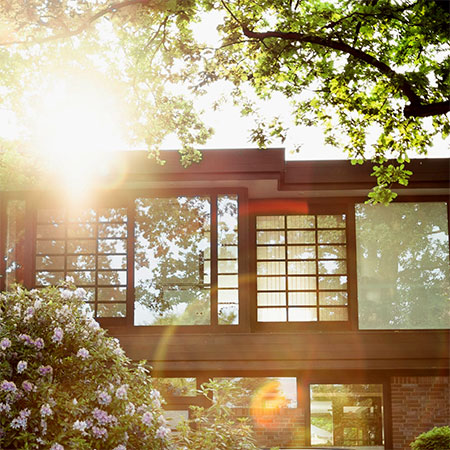Does Exterior Paint Colour Affect Interior Temperature?
Did you know that the paint colour - or material - on the exterior of a house can directly affect the interior temperature of a home?
02/07/2020
We have come to realise the importance of choosing the right paint colours for the interiors of our homes, but do we realise that the same applies to the exterior of a house?
Light, neutral colours have been shown time and again to affect mood, atmosphere and even temperature on our home interiors. We have come to understand that light colours, or colours in the blue spectrum, affect the interior temperature of a home. White and light colours reflect lights, while blue hues offer a more psychological cooling effect in that we perceive these colours to be cooler.
The same can be said for the exterior paint colours selected for application to the outside of a property. Our houses not only have to withstand the hot temperatures of the summer months, but also the chilly mornings and nights we experience during autumn and winter. Imagine if, rather than switching on the air conditioner, or powering up electric heaters, we could affect the interior temperature of our homes by choosing the right colour on the exterior.
The US Department of Energy has released several reports that deal with heating and cooling of a home without the aid of additional appliances. They discovered that the exterior paint colour of a house can be directly related to heat absorption. The report also goes on to state that where dark paint colours are applied, these can absorb between 70 to 80% radiant energy from the sun. This energy, in the case of a home that has no insulation in place, is transferred into the living spaces of your home.
Obviously, you can expect a far different result from light colours, where these colours reflect and bounce away light and therefore absorb less radiant energy. Exterior walls painted in white or light colours only absorb around 25 to 30% radiant energy, meaning that less energy is expended in cooling the interior of a home.
Choosing a Light Paint Colour to Reflect Radiant Energy
Energy organisations around the globe recommend the use of any methods available to reduce energy consumption in the home and one way of doing this is to paint the exterior of a property in a light-reflecting colour, one that will keep a home cooler during the hotter months of the year and reduce the need for appliances to cool down the interior. This is solar-responsive design, or choosing materials that can save energy and ultimately save our natural resources.
Keeping a home cool and comfortable during the summer months can be a problem as indoor temperatures rise. Fans and air conditioners may provide a respite from the heat, but consider the costs.
If you are looking at maintaining or painting your home exterior, consider a paint colour that will aid in keeping your home cool during the hotter months of the year. You don't have to go for white, in fact, many homes are painted in light, neutral colours that, while not as effective as white, do absorb far less radiant energy as darker paint colours; or use a combination of both light for the walls and dark for accent areas or trim.






